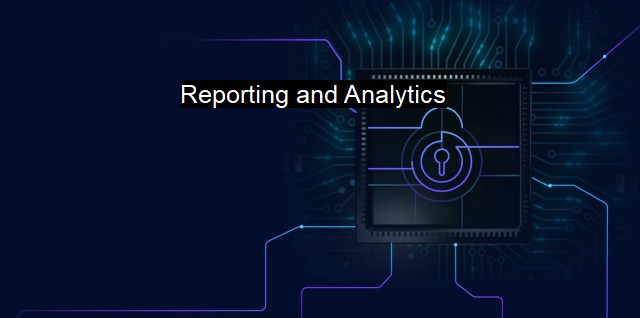What are Reporting and Analytics?
Data-Driven Defense: The Power of Reporting and Analytics in Cybersecurity and Antivirus
Reporting and analytics in the context of cybersecurity and antivirus refers to the series of mechanisms, tools and processes that enable individuals and organizations to assess their network's security state. By leveraging data gathering and statistical analysis, reporting and analytics provide valuable insights on potential vulnerabilities and threats. This enables organizations and individuals to design more effective and robust defenses against malware, viruses, and other forms of cyber-attacks.The basis of reporting is data synthesis. Abundant data on cybersecurity activities is collected in the form of logs. These logs emanate from different sources such as firewalls, Intrusion Detection Systems (IDS), Intrusion Prevention Systems (IPS), antivirus software, and other security apparatus. The data may include instances of attempted breaches, actual breaches, abnormal behavior in network traffic, unexpected modifications in files or commands, among other things.
Reporting transforms these complex and voluminous raw data into a more understandable format. It entails the organization and presentation of cyber activity data in a manner that decision makers can quickly and easily interpret. Typical reporting frameworks feature summary views and detailed views. Summary views illustrate the general security state providing an overview of system health, while detailed views delve into specific incidents, providing comprehensive information on parameters such as the type of the threat, the source, the identified vulnerabilities, and the systems affected.
Although reporting devolves raw data into interpretable insights, analytics takes the process a notch higher. Analytics refers to the application of statistics and machine learning techniques to discover underlying patterns, correlations, and trends within reported data. This process fortifies cybersecurity by not just reflecting the present security state, but also forecasting future possibilities based on historical occurrences and present patterns.
The dire need for reporting and analytics in cybersecurity and antivirus systems arises from a sophisticated cyber threats landscape. Cyber criminals have continuously advanced their tactics, techniques and procedures (TTPs) creating a myriad of ever-evolving threats like ransomware, advanced persistent threats, botnets, phishing scams among others. Reporting and analytics offer a proactive approach to handling such threats.
By adopting effective reporting and analytics, organizations can demonstrate due diligence in their cybersecurity commitments. It becomes easier to adhere to legal, regulatory, and contractual obligations concerning data protection. For instance, the General Data Protection Regulation (GDPR) requires organizations to show verifiable protection of user data. Robust reporting and analytic mechanisms can quickly detect potential and actual breaches, thus enabling organizations to take appropriate measures as per regulatory stipulations.
Reporting and analytics are key in managing the reputational risk associated with data breaches. Swift detection of attacks can significantly reduce the scale of a breach, thus preventing a possibility of a full-blown reputational crisis.
In the context of antivirus operations, reporting and analytics play an equally crucial role. An antivirus software performs functions like the regular scanning of files, removal of malicious scripts, blocking suspicious websites and quarantining potentially harmful files. Through reporting and analytics, these activities can be tracked, evaluated and improved upon. trends of persistent malware attacks on a specific node could suggest the need for enhanced protection or reveal hidden vulnerabilities in that area.
Reporting and analytics are fundamental aspects in cybersecurity and antivirus fields. By transforming raw data into actionable insights, they provide the information required to better understand current threats, predict the possibility of future threats, and decide on the best strategies and systems required to deal with such threats. In these technologically advanced times, when cyber threats seem to be always a step ahead, reporting and analytics can make the meaningful difference between a secure environment and a compromised one.

Reporting and Analytics FAQs
What is reporting and analytics in the context of cybersecurity and antivirus?
Reporting and analytics in the context of cybersecurity and antivirus refer to the process of collecting and analyzing data to gain insights into the performance and effectiveness of the security measures implemented. These insights are then used to identify vulnerabilities, threats, and potential attacks to prevent security breaches.What are the benefits of using reporting and analytics in cybersecurity and antivirus?
Reporting and analytics enable organizations to gain a comprehensive understanding of their security posture, identify areas of improvement, and make data-driven decisions to enhance their security measures. This helps in improving threat detection and response times, reducing the risk of security breaches, and ensuring compliance with regulatory requirements.What kind of data can be analyzed using reporting and analytics in cybersecurity and antivirus?
Reporting and analytics can analyze various types of data, including network traffic data, user behavior data, threat intelligence data, and incident data. This data can provide insights into the nature and frequency of attacks, the effectiveness of security measures, and potential vulnerabilities.What are some common reporting and analytics tools used in cybersecurity and antivirus?
There are several reporting and analytics tools used in cybersecurity and antivirus, such as SIEM (Security Information and Event Management) solutions, IDS/IPS (Intrusion Detection and Prevention Systems), and threat intelligence platforms. These tools collect, aggregate, and analyze data from multiple sources to provide a holistic view of the organization's security posture.| | A | | | B | | | C | | | D | | | E | | | F | | | G | | | H | | | I | | | J | | | K | | | L | | | M | |
| | N | | | O | | | P | | | Q | | | R | | | S | | | T | | | U | | | V | | | W | | | X | | | Y | | | Z | |
| | 1 | | | 2 | | | 3 | | | 4 | | | 7 | | | 8 | | |||||||